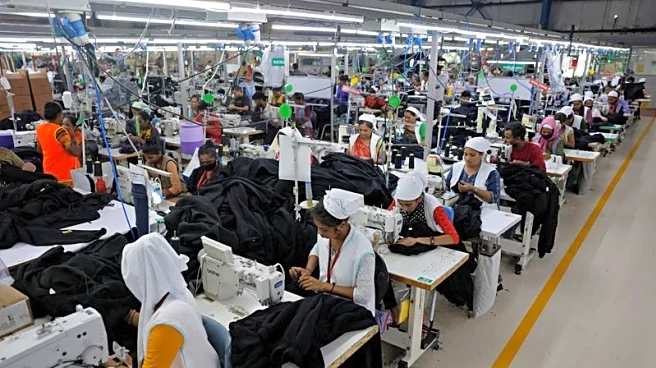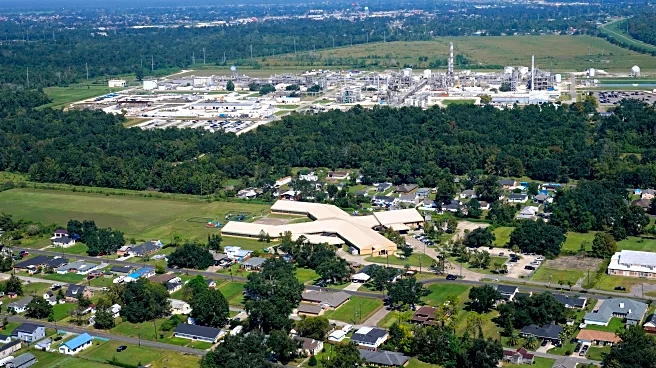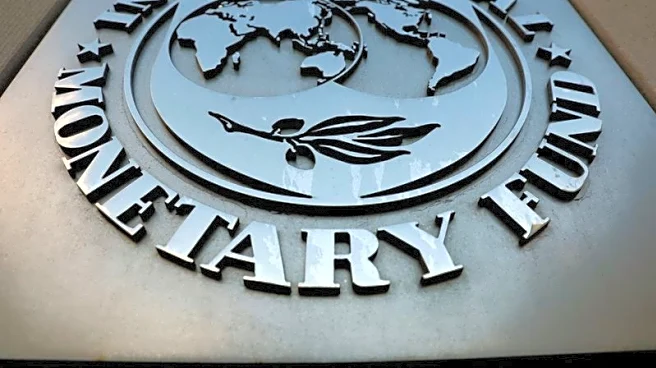What's Happening?
US manufacturing activity has slowed to a four-month low in November, primarily due to tariffs that have increased prices and reduced demand. According to S&P Global, the flash US manufacturing PMI decreased
to 51.9 from 52.5 in October, with new orders dropping and inventories rising to record levels. Chris Williamson from S&P Global Market Intelligence highlighted the challenges faced by manufacturers, including slower growth in new orders and a significant rise in finished goods stock. The University of Michigan's survey indicated a decline in purchasing conditions, with consumers frustrated by high prices and weakening incomes. President Trump's tariffs have raised import costs, affecting lower- and middle-income families. Despite the manufacturing slowdown, the broader business activity remains solid, with the US Composite PMI Output Index rising to 54.8, supported by a stronger services sector.
Why It's Important?
The slowdown in manufacturing activity is significant as it may impact broader economic growth in the US. The tariffs imposed by President Trump have increased import costs, placing additional financial pressure on households, particularly those with lower and middle incomes. This situation could lead to reduced consumer spending, which is a critical component of economic growth. The services sector's strength provides some stability, but the manufacturing sector's challenges could have long-term implications for employment and economic stability. The situation highlights the delicate balance between trade policies and economic health, with potential repercussions for various stakeholders, including manufacturers, consumers, and policymakers.
What's Next?
If demand does not revive, manufacturing output may weaken further, potentially leading to increased unemployment and economic instability. Policymakers may need to consider adjustments to trade policies to alleviate the pressure on manufacturers and consumers. The services sector's continued strength could mitigate some negative impacts, but sustained growth will require careful management of inflation pressures and consumer sentiment. Stakeholders, including businesses and government leaders, will likely monitor these developments closely to adapt strategies and policies accordingly.
Beyond the Headlines
The current situation underscores the broader implications of trade policies on economic health and consumer behavior. The tariffs have not only affected manufacturing costs but also consumer confidence and spending patterns. This scenario raises questions about the long-term sustainability of such trade measures and their impact on economic inequality. The interplay between manufacturing and services sectors highlights the complexity of economic dynamics and the need for balanced policy approaches that consider both immediate and long-term effects.














